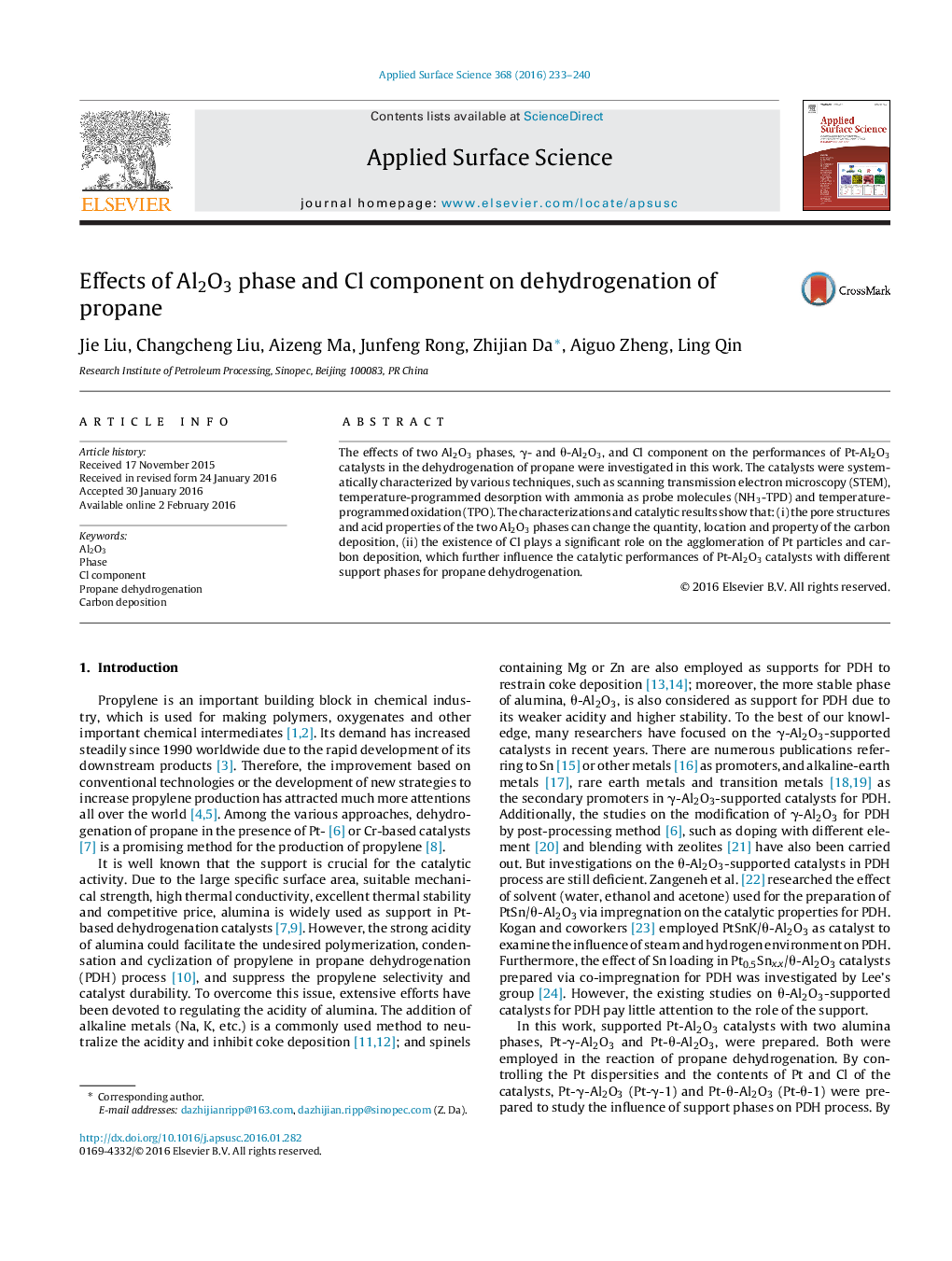| Article ID | Journal | Published Year | Pages | File Type |
|---|---|---|---|---|
| 5355585 | Applied Surface Science | 2016 | 8 Pages |
â¢Comparative study of Al2O3 phase on dehydrogenation of propane was implemented.â¢Pore structures and acid properties of Pt-Al2O3 are correlated to the activities.â¢Pt-θ-Al2O3 with abundant Cl content shows the highest activity and stability.
The effects of two Al2O3 phases, γ- and θ-Al2O3, and Cl component on the performances of Pt-Al2O3 catalysts in the dehydrogenation of propane were investigated in this work. The catalysts were systematically characterized by various techniques, such as scanning transmission electron microscopy (STEM), temperature-programmed desorption with ammonia as probe molecules (NH3-TPD) and temperature-programmed oxidation (TPO). The characterizations and catalytic results show that: (i) the pore structures and acid properties of the two Al2O3 phases can change the quantity, location and property of the carbon deposition, (ii) the existence of Cl plays a significant role on the agglomeration of Pt particles and carbon deposition, which further influence the catalytic performances of Pt-Al2O3 catalysts with different support phases for propane dehydrogenation.
Graphical abstractDownload high-res image (199KB)Download full-size image
